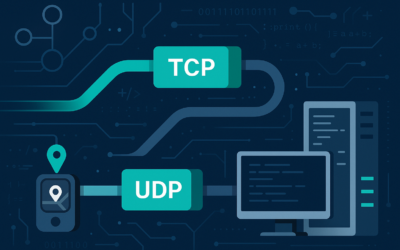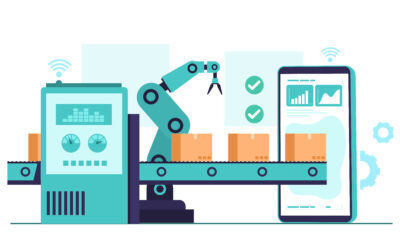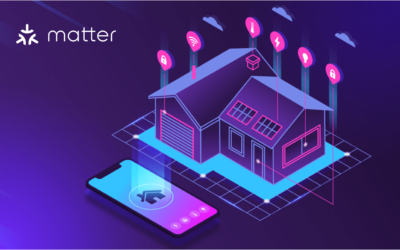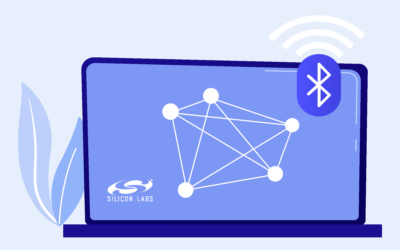Adopting Blockchain-based IoT Applications for Building Better IoT Systems and Improving the Security and Trust of Data and Transactions
Benefits of Implementing Blockchain Technologies in IoT systems
- Enhance data security by connecting IoT devices to a blockchain network (reduces data breaches)
- Automate transactions and processes between IoT devices using smart contracts
- Increase transparency using distributed ledgers
- Provide data integrity through an immutable ledger
- Reduce data management and storage costs
- Improve efficiency through a decentralized architecture (data decentralization)
- Improve interoperability by sharing data across systems using shared ledgers and smart contracts.
Data is collected from IoT devices and sensors connected to an IoT edge and sent to the blockchain network through gateways, IOTA protocols, APIs, or middleware.
Data collected from IoT devices is secured through cryptographic mechanisms, encoded with information, and added to automated workflows in a private network and connected with other systems or apps (dApps).
Blockchain for IoT makes data secure and available for recording and verifying private transactions through smart contracts (program coded), executing the business logic for processing and validating transactions in the private network (permissioned blockchain solutions).
Sharing information through a decentralized blockchain network makes it very difficult to compromise network security as millions of nodes transfer data on a peer-to-peer (p2p) basis.
IoT blockchain systems have built-in trust and enable direct communication of devices without a central authority where processes are automated (through smart contracts) and transactions occur automatically.
IoT devices are authenticated and authorized to access the business blockchain network using public cryptographic keys, digital signatures, and other techniques. Then, they are registered on the network with a unique identity and assigned to a node (or nodes) in the network.
Then, the IoT device starts to generate encrypted data which is transmitted to the network and validated by the ledger using a consensus mechanism. After data is in the network, other members can access the data and trigger smart contracts. Then transactions are recorded and added to the ledger.
Data from IoT devices or sensors is transmitted to the blockchain platform using MQTT, HTTP, or CoAP communication protocols.
Top Blockchain-Based IoT Platforms
IoT platforms with blockchain capabilities enable secure device interactions and support smart contracts and decentralized applications (dApps). Businesses build dApps that pull information from smart contracts and create interactions between devices. The most prominent platforms worth investigating when exploring blockchain for IoT are IOTA and Hyperledger Fabric.
IOTA (IOTA blockchain) is an open-source created by the IOTA Foundation, based in Berlin, Germany, offering an efficient and scalable distributed ledger solution beyond blockchain. It enables secure and decentralized transactions using a data structure replicated across a network of computer nodes (Tangle) and a consensus mechanism forming a Directed Acyclic Graph (DAG) specific for IoT applications that helps to avoid blockchain bottlenecks.
IOTA blockchain uses a validation method in which a transaction confirms the two previous transactions, eliminating the need to pay transaction fees, eliminating miners and validators, and reducing energy consumption. This allows IOTA to achieve scalability and high throughput with lower energy consumption as it does not require energy-intensive computations by miners.
Hyperledger Fabric is an open-source enterprise-grade private blockchain platform for building decentralized applications (dApps) that support private transactions and confidential contracts (coded in Java, NodeJS, and Go) for managing IoT device interactions, real-time data processing, and automating business processes. Hyperledger Fabric provides a modular and configurable architecture that helps to reduce network congestion and accommodates many plug-and-play components, integrating with edge computing and cloud services. As a result, it has been widely adopted by Google, AWS, IBM, Azure, and Oracle.
Hyperledger validates transactions using the “decentralized practical Byzantine Fault Tolerance (dBFT)” consensus method that is suitable for enterprise-level apps, as it provides a high level of scalability but with significant energy consumption.
Challenges Implementing Blockchain for IoT
It is important to evaluate the energy requirements of blockchain platforms. For example, using proof-of-work (PoW) consensus algorithms has energy-intensive operations that may affect battery-powered devices when performing blockchain transactions. This may become a problem depending on the type of devices, but not so much for platforms using directed acyclic graph (DAG) algorithms or proof-of-stake (PoS) consensus methods.
In general terms, it’s important to evaluate the network size, number of transactions, quantity of IoT devices, consensus updates, and the capacity of the hardware used by the nodes.
IoT Blockchain Use Cases
- Healthcare
- Supply Chain
- Asset Tracking
- Smart Cities
- Smart Homes
- Energy Management
- Agriculture
Takeaway
Blockchain in IoT systems provides a more secure and trustworthy system for IoT applications. In addition, this combination of technologies has many benefits, such as transaction automation, improving efficiencies from decentralizing data, enhancing security, and increasing transparency and accountability in the system.
Krasamo is an IoT development company with more than 12 years of experience in creating solutions for medium to large U.S. corporations. Contact us today to discuss how to apply blockchain for IoT to your use case.












Lmao yaaas I totally vibe with this! just worked on a project where we implemented blockchain for IoT and it was GAME CHANGER, now we’re an internet of things consulting firm too!